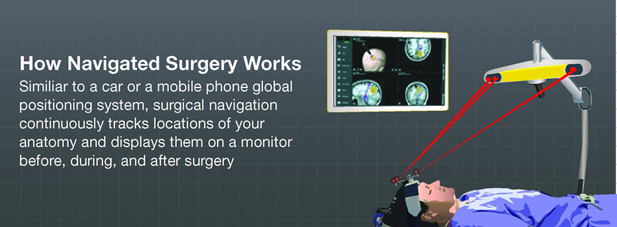
The various applications of navigation for neurosurgery have been widely used and reported for almost two decades.1 According to a study in 2000, researchers were already anticipating that a significant portion of neurosurgery would be performed using computer-based interventions.2
Today, doctors are using computerized technologies that are familiar to us in the consumer world to help them fight cancer in the operating room. An important example of that application is image guided surgery (IGS) and it helps surgeons perform safer and less invasive1 procedures and remove brain tumors that were once considered inoperable due to their size and/or location.
If you and your surgeon are considering surgery as the right next step for you, you may be interested in learning more about surgery using image guidance technologies also referred to as stereotaxy, surgical navigation, computer assisted surgery, navigated surgery, stereotactic navigation.
Similar to a car or mobile Global Positioning System (GPS), image guided surgery systems use cameras or electromagnetic fields to capture and relay the patient’s anatomy and the surgeon’s precise movements in relation to the patient, to computer monitors in the operating room. These sophisticated computerized systems are used before and during surgery to help orient the surgeon with three-dimensional images of the patient’s anatomy including the tumor.
Doctors and surgical staff can:
Consider asking your doctor questions about image guided surgery to understand if this type of technology would be beneficial to your type of brain tumor.
1 http://www.ncbi.nlm.nih.gov/pmc/articles/PMC3627858/
2 Kelly PJ. What is past is prologue. Neurosurgery. 2000 Jan; 46(1):16-27.